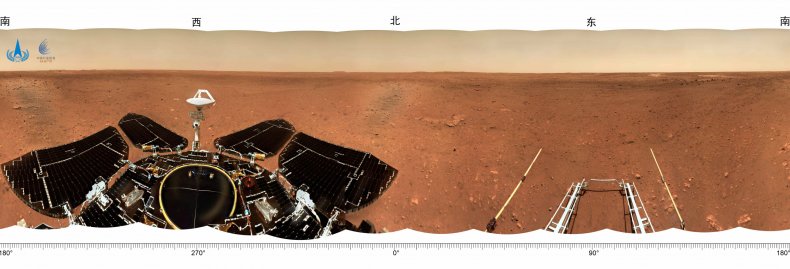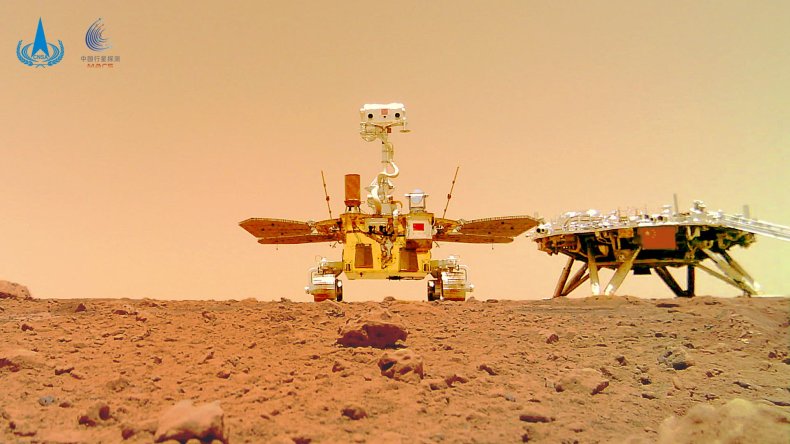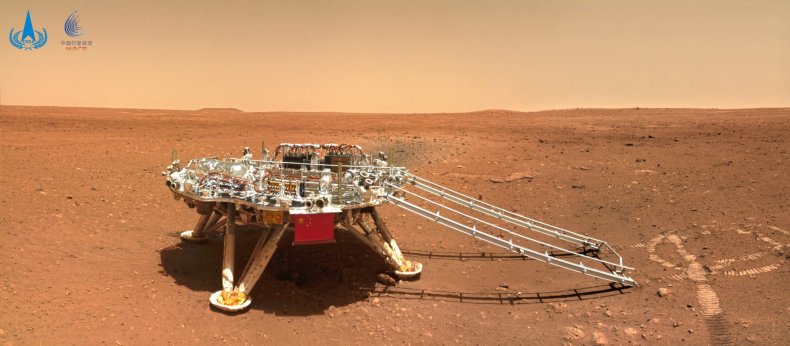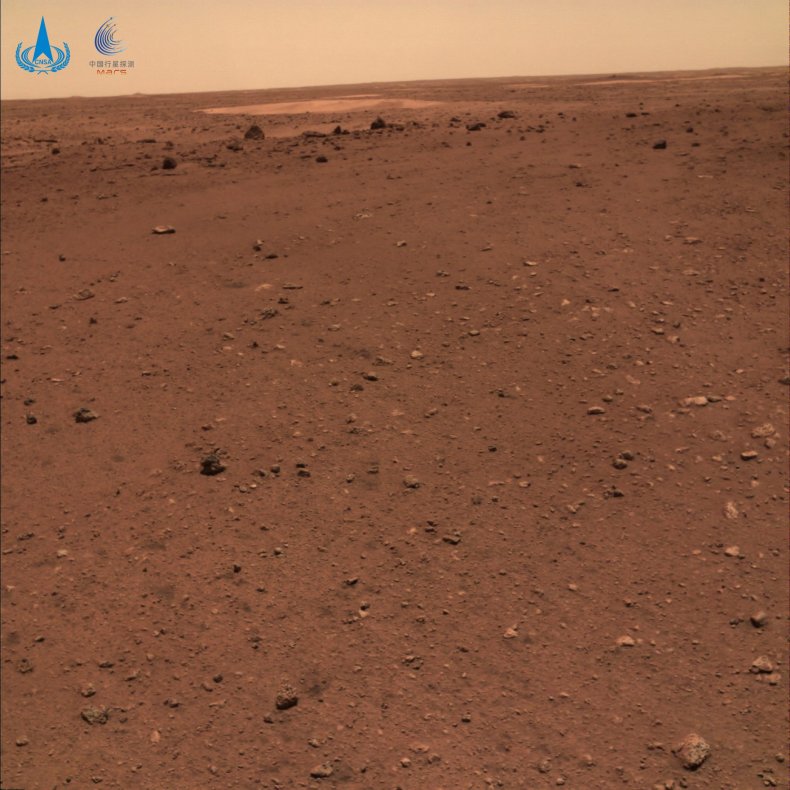China Celebrates Flag on Mars As Rover Beams Back First Selfie
China's national space agency has released the latest images beamed back to Earth by its pioneering Mars rover Zhurong, following the conclusion of its first mission on the Red Planet this week.
The high-resolution photographs published by the China National Space Administration (CNSA) on Friday included views of the planet's vast and barren landscape, as well as a celebrated "selfie" showing the Chinese national flag.
According to a CNSA press release, the images of the Martian topography were the first ones to be taken by the rover's terrain camera since the equipment touched down with the mission lander on May 15 Beijing time.

The pictures include a 360-degree panorama of the landing site taken from above the lander, with the rover's solar panels and the platform's ramp both visible in the shot. China's space agency also shared imagery from Zhurong's first Mars exploration, which showed the rocks and landforms the vehicle was to examine and survey.
The historic first photographs of the Chinese flag on another planet were snapped during Zhurong's first mission, CSNA said. The first taken about 20 feet from the Tianwen-1 mission lander shows a bright red flag having been unfurled from the side of the platform.

Two five-star flags—including one on the rover itself—is seen again in Zhurong's selfie, which was taken about 30 feet south of the lander, where the rover had lowered its modular camera onto the Martian surface before reversing into frame.
The pictures were transmitted wirelessly from the camera to the rover, which relayed them via the Tianwen-1 orbiter back to Earth, the report said.

"The release of the first scientific images marks a complete success of China's first Mars exploration mission," reported CGTN, the international arm of Chinese state broadcaster CCTV.
Tianwen-1's chief mission designer Zhang Rongqiao said Zhurong was in "excellent health," according to the TV station's report.
"Zhurong is very healthy and steadily making way to its designated targets every day. Since the touchdown on May 15, the rover has been checking out its own conditions as well as its surroundings; it has moved some 80 meters by now," Zhang added.
Zhurong has now been operational on the planet for 28 Martian days, according to CGTN.
On Saturday, CNSA said Tianwen-1 had helped the country's aerospace industry achieve a number of "firsts," including China's acquisition of first-hand scientific data from Mars.
The interplanetary mission to Mars has simultaneously allowed China to set foot on the planet, while successfully conducting orbiting, landing and exploration, said CNSA spokesperson Xu Hongliang.
Xu said China's national space agency was collaborating with European agencies and NASA for mission control as well as orbiter communication and safety.
Zhurong—named after the god of fire in ancient Chinese mythology—was approved in 2016 and launched last July. It carries 13 instruments for a primary mission to explore the geology within Utopia Planitia, in Mars' northern hemisphere.


